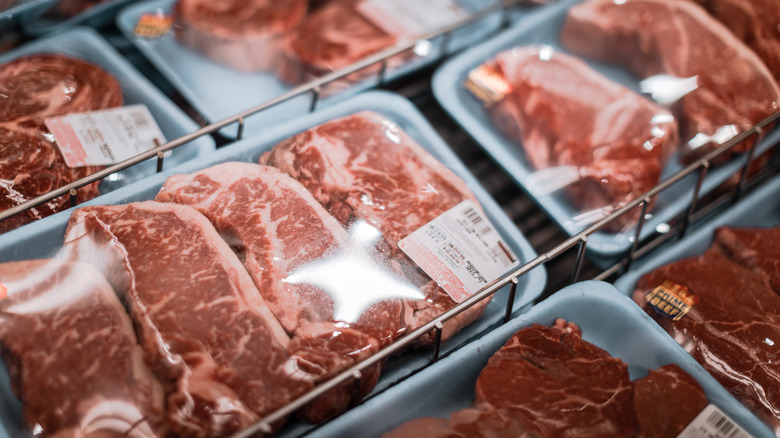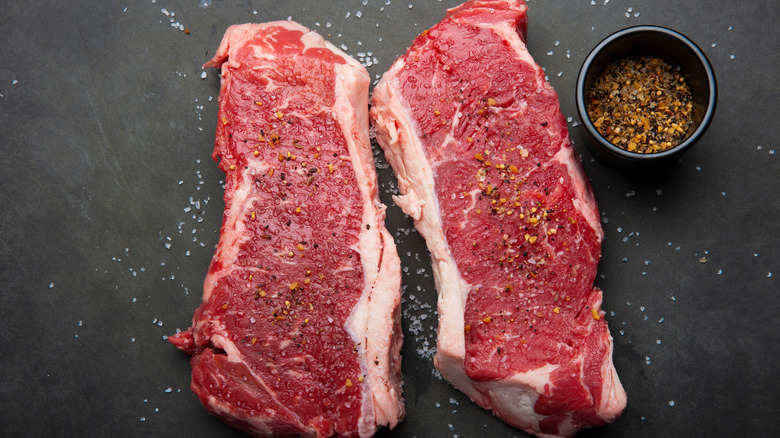The Cut Of Steak You Can Get For Cheap At Costco
Continuing its well-earned reputation for being more affordable than regular grocery stores, Costco maintains its status as the absolute best place to buy meat. While its inexpensive tubes of ground beef and rotisserie chickens (which remain $4.99, despite inflation) are nothing to sneeze at, whole steak roasts like its beef strip loin are where the real savings come in.
While a USDA Choice New York strip can cost as much as $10.99 per pound at Costco when pre-sliced, the real savings come from buying the whole strip loin instead. At just $8.59 per pound for an 18-pound roast, you're saving $2.40 per pound — or $43.20 overall. For those willing to do a bit of slicing at home, that difference can go toward a nice bottle of wine and side dishes, all while keeping your freezer stocked with neatly packed New York strips for months.
Strip loin comes from the longissimus muscle, the upper portion of the short loin located just behind the ribs. As such, cows don't use this muscle much, giving it incredible tenderness along with a decadent fat cap. But while buying pre-sliced steaks at your local grocery store can leave you with a considerable bill at checkout, at Costco, you can enjoy some surprising savings. And although some home cooks may feel nervous about slicing their own steaks, the truth is that the process couldn't be easier.
How to purchase and slice a Costco strip loin
Many Costco locations have strip loins sitting in the ice chests of the meat section, but not always. If you don't see one available, take advantage of another reason Costco is such a great place to shop: its skilled butchers. These employees are there to help, and are often more than happy to check if they have a strip loin available in the back.
Once you've secured the loin, it's time for the fun part. Never try to slice a warm, raw loin — these can get a bit slippery under the knife. Instead, place the whole loin in the freezer for up to 30 minutes to firm it up slightly without actually freezing it. Once it feels a bit more solid, decide how thick you'd like your steaks and start slicing with a chef's knife — or better yet, an electric carving knife. Use long, sawing motions to separate the steaks from the loin without breaking up the muscle fibers or sabotaging the meat's texture.
Once your steaks are properly butchered, you'll likely need to freeze some of them unless you're planning a feast for a whole gaggle of friends. Whether you store them in zip-top bags with the air pushed out or use a vacuum sealer, the meat can be kept in the freezer for four to 12 months for maximum taste and freshness.


